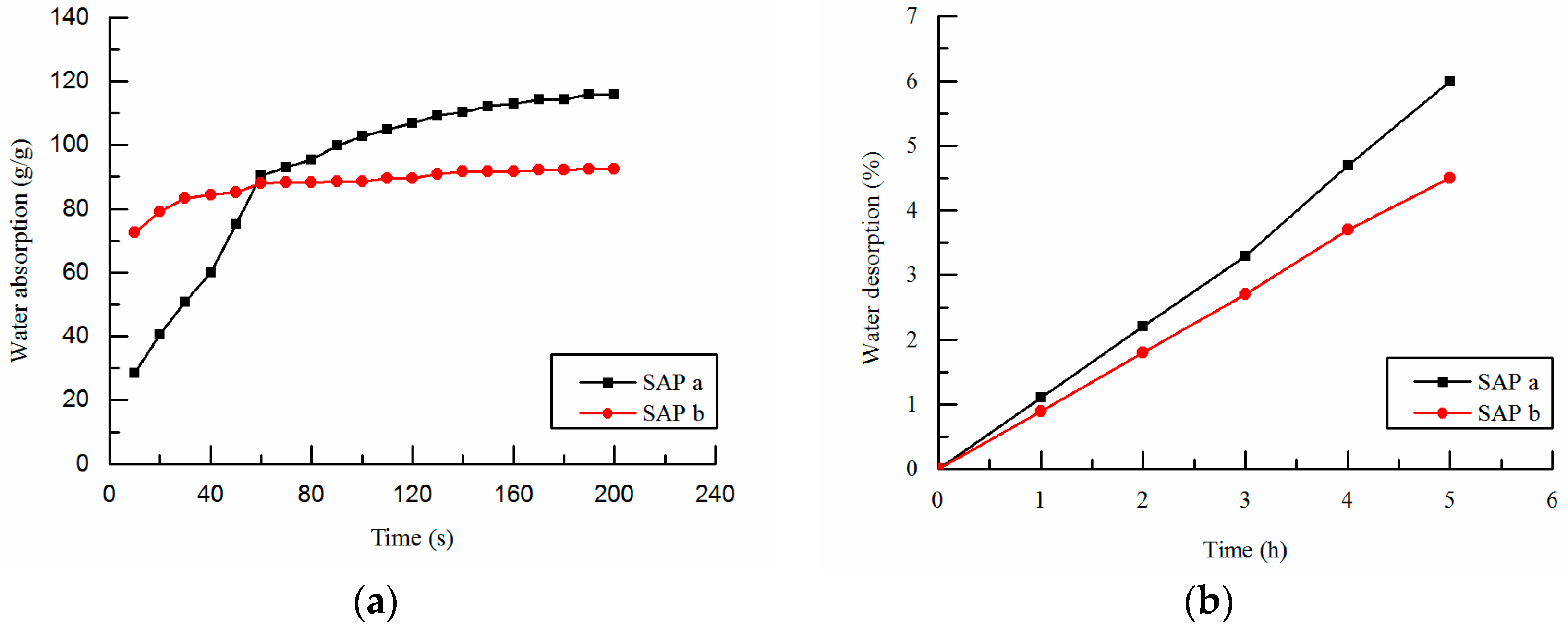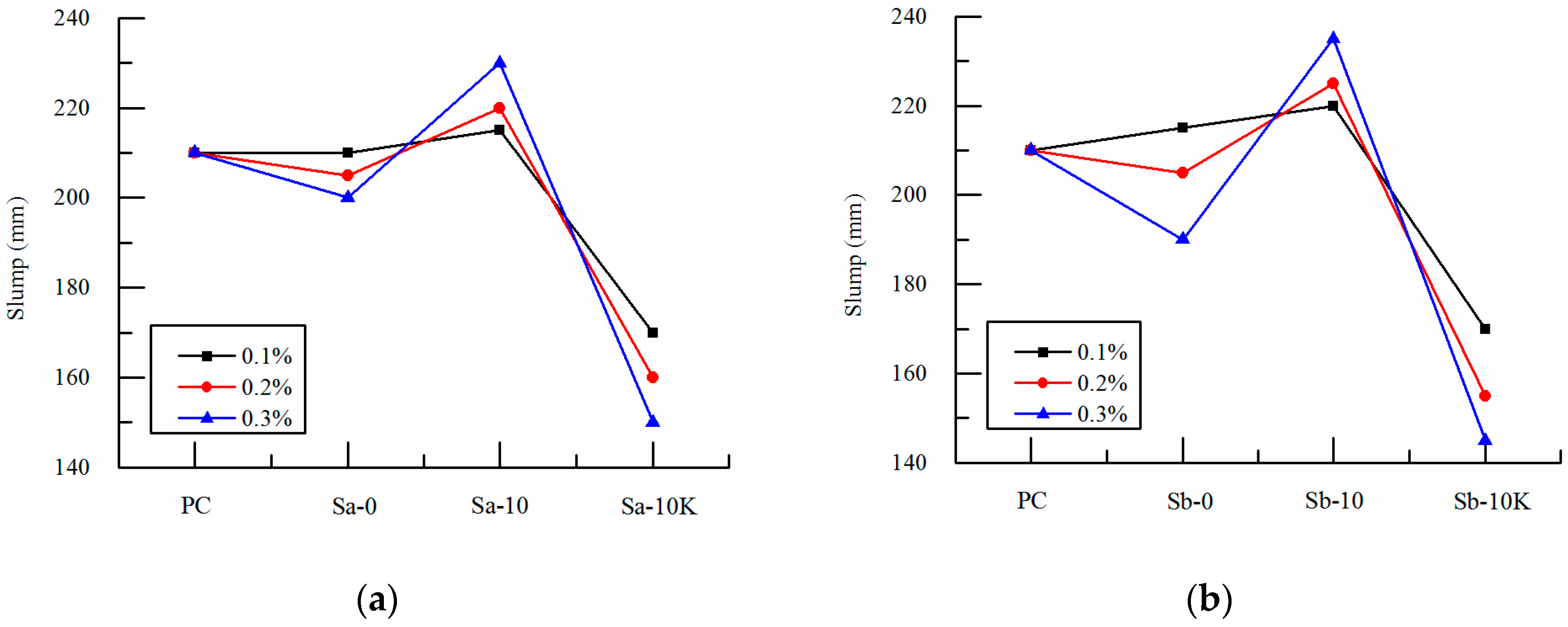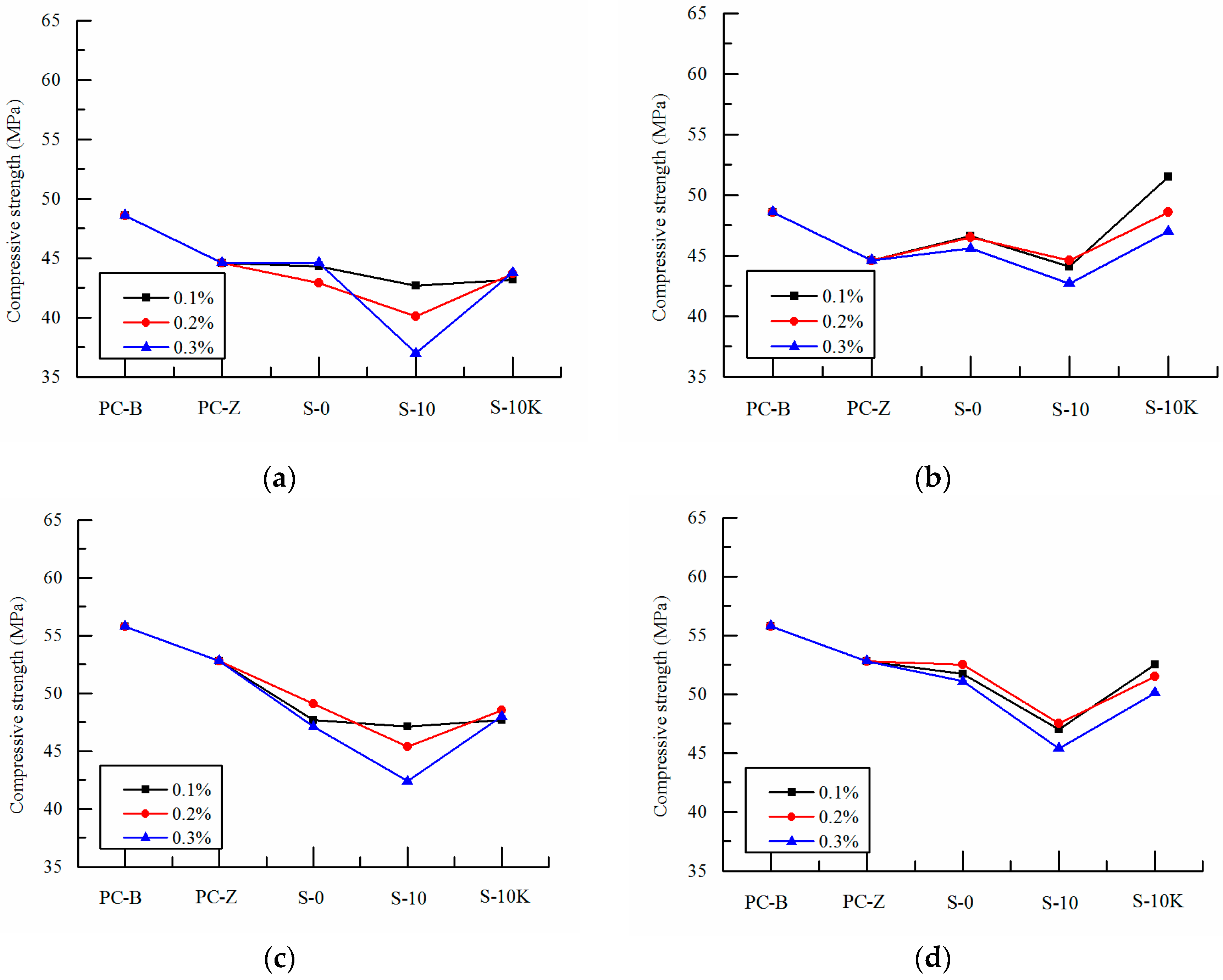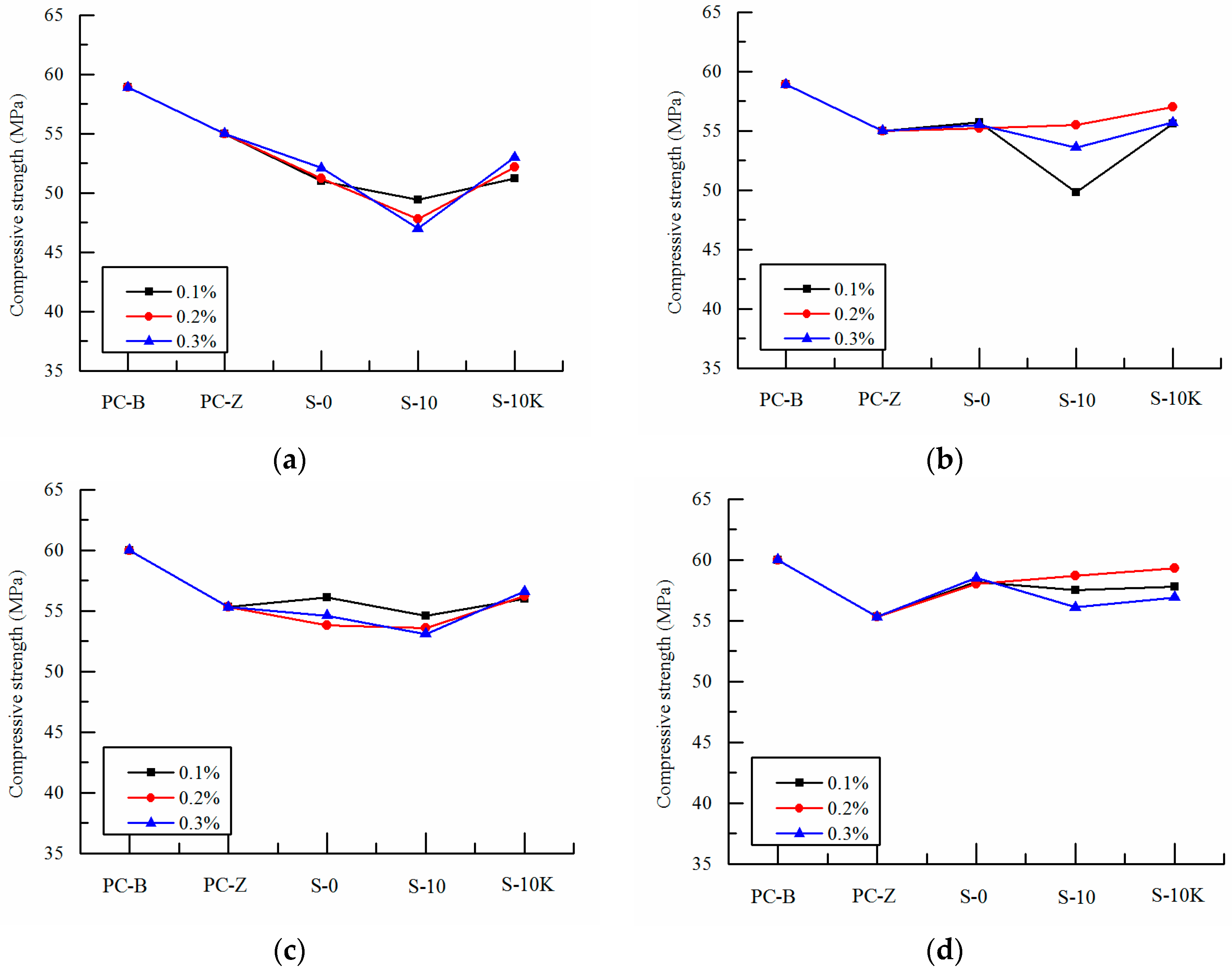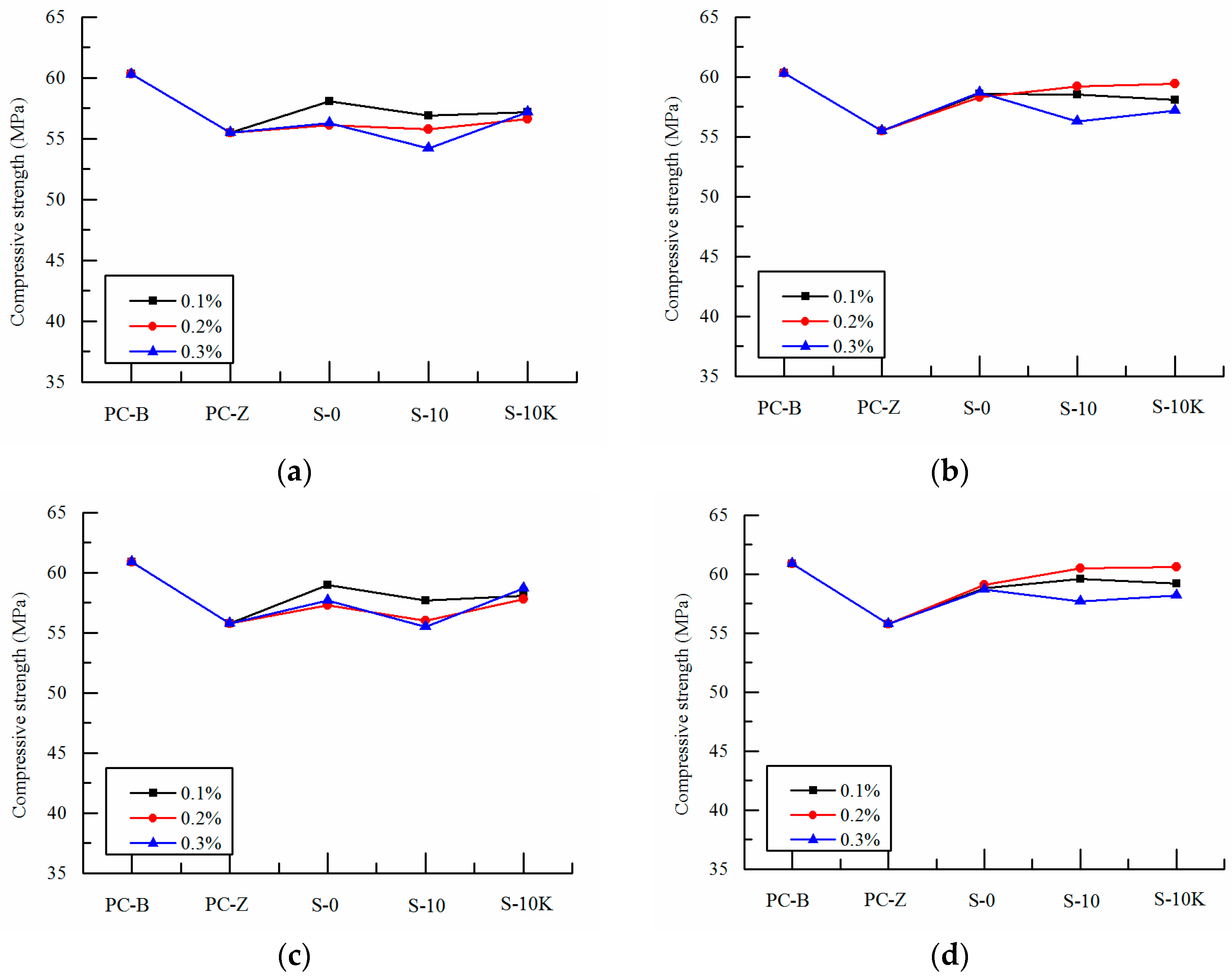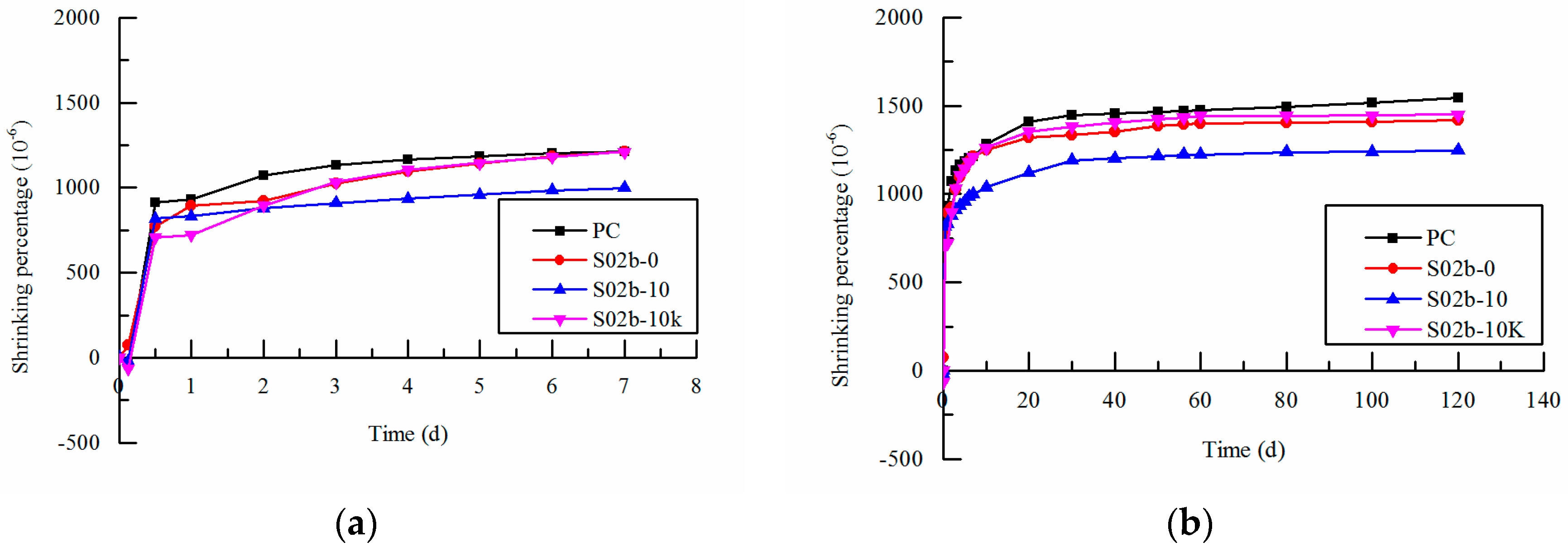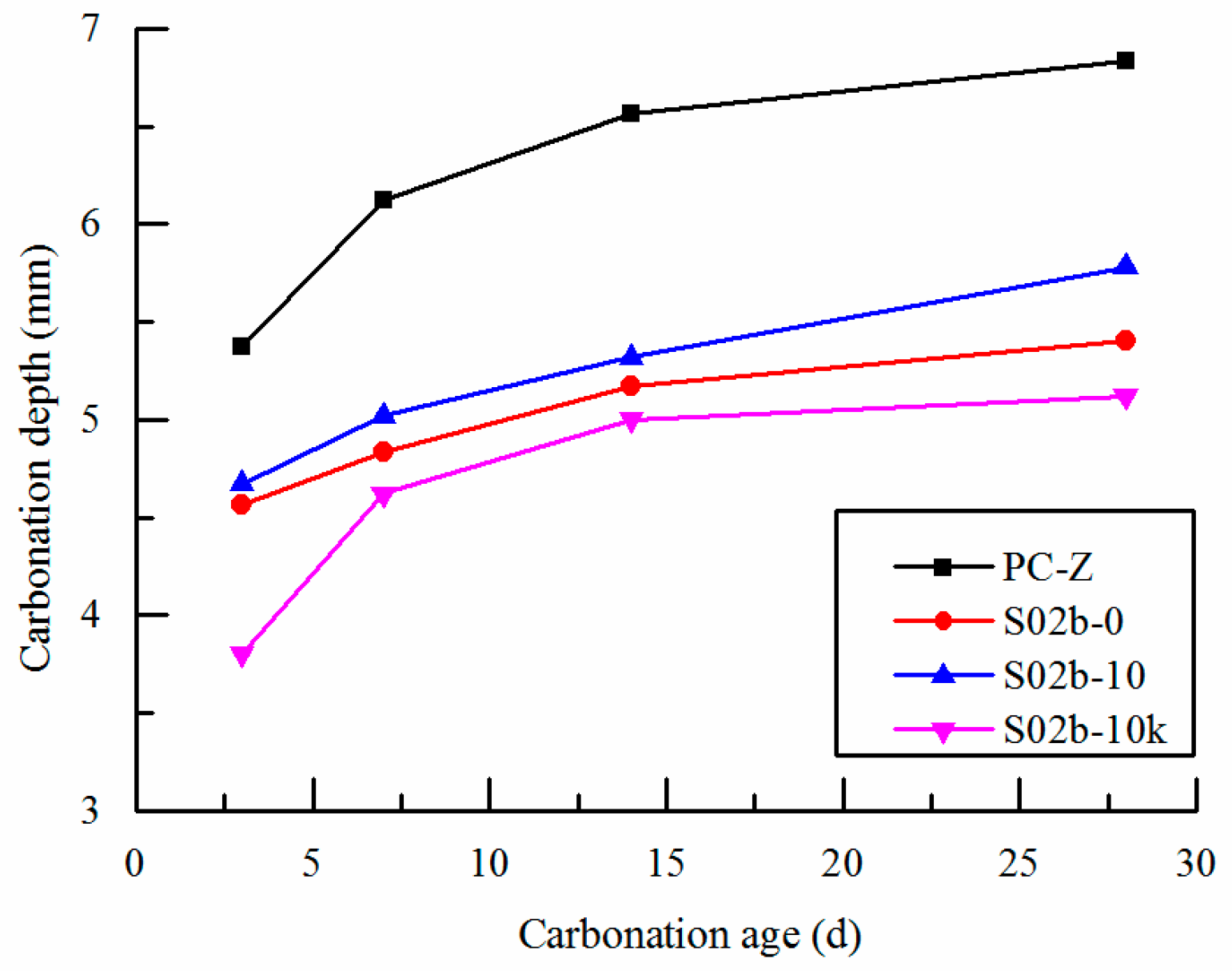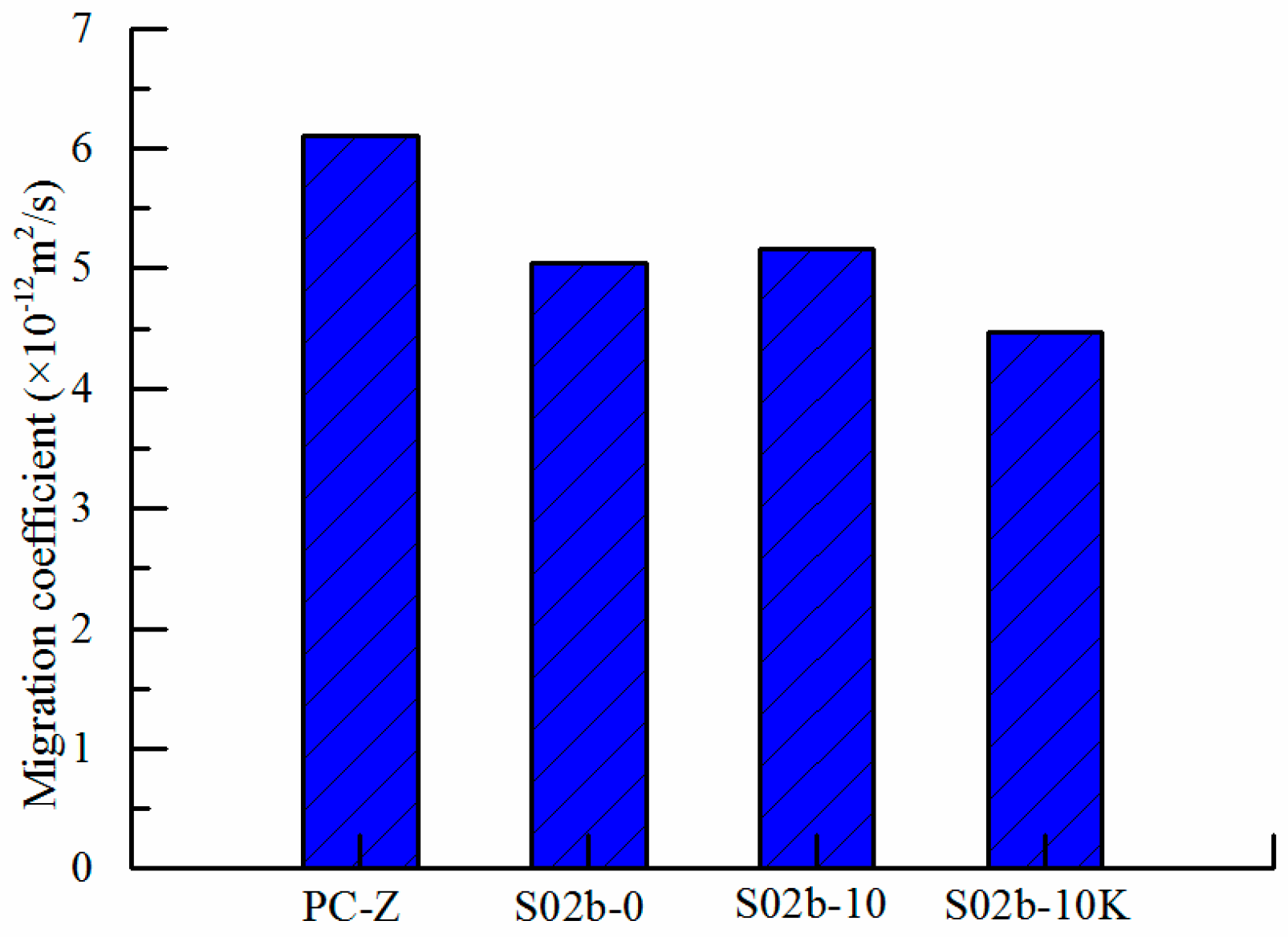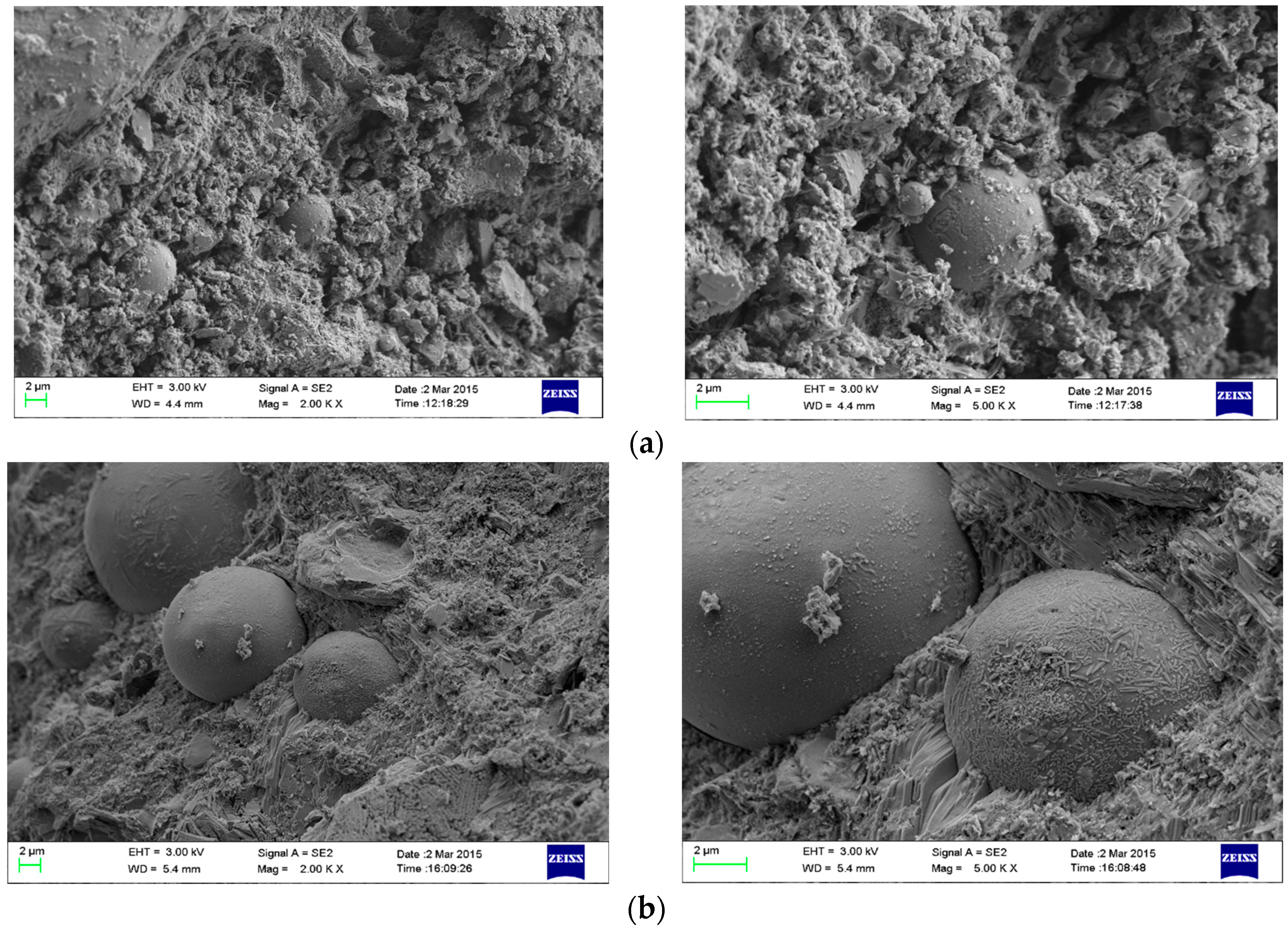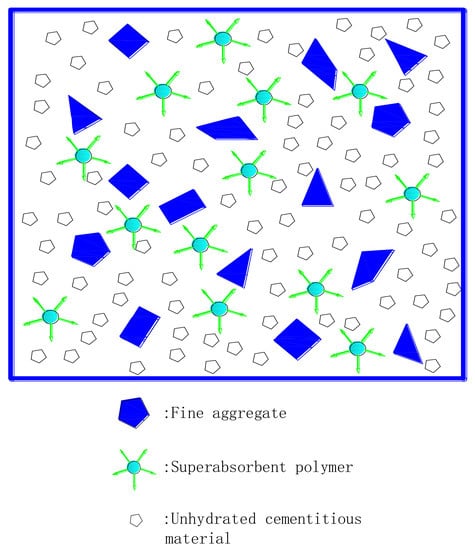1. Introduction
Concrete is a kind of porous, multiphase at all scales, and heterogeneous complex system [
1]. The degree of hydration of cement plays a decisive role in the strength and compactness of concrete. Optimizing the pore structure, reducing porosity and reducing macro pores are the necessary improvement measures for high strength and high durability concrete [
2]. The research on hydration mechanism of cement showed that the inner structure of concrete had fine pore size and compact structure when the water binder ratio was relatively low [
3,
4]. However, there will be more unhydrated cement and mineral admixture particles, which will result in the decrease of internal relative humidity and the increase of the autogenous shrinkage of concrete [
5,
6]. Water curing is a very important technical measure for concrete in order to ensure the hydration process of cementitious materials in concrete. Effective water curing measures should ensure the enough moisture environments inside and outside the concrete which are necessary for hydration. If the moisture is not enough, it will cause early shrinkage and even the cracking of concrete, which will adversely affect the growth of strength and durability of concrete at later age. In practical engineering, manual operation and external curing are usually adopted, which is very difficult to produce timely and adequate curing.
The internal curing method has been studied for some years which may be an effective way to ensure the hydration process in concrete. Water is introduced into the concrete in advance by absorbent material like superabsorbent polymer (SAP), so that some of the water acts as internal curing water from the inside out, in order to achieve the effect of internal curing in the hydration process of the cementitious material. When the relative humidity inside the cement matrix gradually drops, the absorbent material can slowly release water to supplement the water consumption of cement hydration. The hydration process continued to generate hydration products to fill the pores of cement paste, reduce the micro cracks in cement matrix, and relieve the autogenous shrinkage and drying shrinkage. Then the strength and durability of the concrete can be improved [
7,
8,
9].
SAP is a common water absorbent material with excellent water absorption and desorption capacity. In recent years, relevant research work on SAP concrete has been carried out internationally, and the influence of SAP on the construction performance, strength and durability of concrete has been studied [
10,
11]. It has been shown that the addition of SAP has both positive and negative effects on concrete properties. The research conducted by Dudziak and Mechtcherine [
12] indicated that because the SAP in concrete absorbed moisture in the mixture and reduces the slump of the concrete, additional internal curing water absorbed by the SAP was needed to compensate for the moisture in concrete. Snoeck and Schaubroeck [
13] compared the performance of concrete with different kinds of SAP. The results showed that if the particle size was small, the water absorption rate and the volume of SAP had a negative impact on the performance of concrete. When internal curing water was absorbed by SAP, the reduction of workability could be compensated to a certain extent [
12,
14]. However, SAP will leave pores when water is released. Adding SAP which absorbed additional internal curing water increases porosity, and this may have a negative effect on the strength of concrete [
15,
16,
17]. Studies [
4,
18,
19,
20,
21] have also shown that although the swelling of SAP affects the development of early pore structures, the water absorbed by the SAP will gradually release when the relative humidity of the concrete decreases. It will effectively alleviate the autogenous shrinkage and promote hydration of cementitious materials. Therefore, the strength of concrete may be enhanced. Although SAP can effectively alleviate autogenous shrinkage, there is a lack of experimental studies on the combined effects of autogenous shrinkage and drying shrinkage in the natural environment at long ages.
The incorporation of SAP increases the porosity of concrete which may affect the durability of concrete. However, SAP with the absorption and desorption properties can change the water distribution in concrete. So that the process of cement hydration is promoted, the microstructure of cement matrix is improved, and the adverse effects of voids released by SAP can be offset. Hasholt and Jensen [
22] concluded that the large volume of gel solid made the pore system become more tortuous and the porosity become less. Thus the chloride ion diffusion coefficient of concrete was reduced.
In this paper, the influence of the volume, particle size and ways of entrained water of SAP on the workability, compressive strength, shrinkage, carbonation resistance and chloride penetration resistance of concrete have been experimentally studied. Based on the microscopic test results of mineral compositions, pore structures and morphology of hydration products, the mechanism of SAP on the performance of concrete has been studied.
4. Conclusions
The influence of volume, particle size, and ways of entrained water of SAP on the workability, compressive strength, shrinkage, carbonation resistance and chloride penetration resistance of concrete has been studied through macroscopic and microscopic test. Based on mercury intrusion porosimetry (MIP) test, X-ray diffraction (XRD) test and scanning electron microscope (SEM) test results, the pore structure, morphology of hydration products and mineral compositions of concrete have been further analyzed, and the mechanism of SAP on the performance of concrete has been studied. The main conclusions are as follows:
With the incorporation of SAP, the slump of concrete is influenced by SAP volume and different entrained ways of internal curing water. The pre-absorbed SAP increase the slump of mixture. And with the increase of SAP volume, the slump increases gradually. But the SAP without water absorption and the pre-absorbed SAP with the deduction of internal curing water from mixing water can reduce the slump of mixture. And with the increase of SAP volume, the decreasing range increased.
At early age, the concrete mixed with SAP does not have effect on internal maintenance. Then the internal curing effect of SAP gradually begins to work. At later age, the internal curing effect of SAP is more obvious, and the compressive strength of the internal curing concrete with SAP increases continuously. In addition, SAP with the particle size of 150–180 μm has an optimum particle size range to improve the compressive strength of concrete.
The SAP can alleviate the total shrinkage of concrete. When the non-absorbed SAP or pre-absorbed SAP with the deduction of internal curing water from mixing water are added, the total shrinkage value of SAP concrete decreases slightly. However, the effect of reducing total shrinkage of concrete by adding pre-absorbed SAP is remarkable.
SAP can significantly improve the abilities of carbonation resistance and chloride penetration resistance of concrete. And different ways of entrained water have great impact on the abilities of carbonation resistance and anti-chloride erosion of concrete. When the pre-absorbed SAP with the deduction of internal curing water from mixing water is added, the abilities of carbonation resistance and anti-chloride erosion of concrete are relatively better.
When SAP is added into concrete, the gel pores and small capillary pores increase, the size of big capillary pores and air pores are reduced. The pre-absorbed SAP can increase the porosity and total pore volume of concrete. But the SAP without water absorption and the pre-absorbed SAP with the deduction of internal curing water from mixing water can reduce the porosity and total pore volume of concrete.
